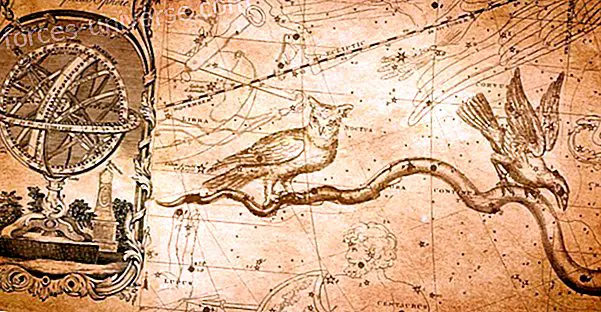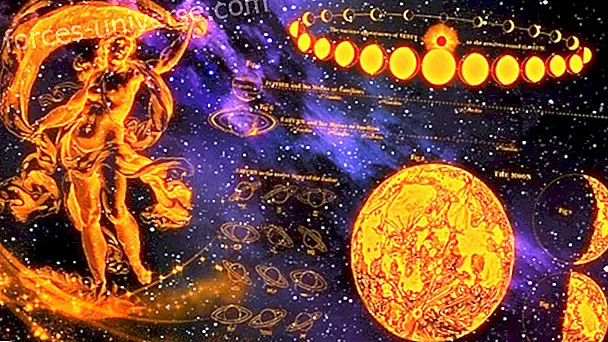INNOVATION COURSE Unit 1: The sciences. Learning Object 4: Sociology
Sociology as a social science is responsible for the scientific analysis of the structure and functioning of human society or regional population. Study the collective phenomena produced by the social activity of human beings, within the historical-cultural context in which they are immersed. Parsons' theory of social action was the first theory of social systems, in which he saw voluntary action through the prism of cultural values and social structures that constrain elections.
Social psychology is an interdisciplinary project that saves the space between psychology and sociology. During the years immediately after World War II, there was frequent collaboration between psychologists and sociologists. However, the two disciplines have turned towards an increasingly specialized attitude, isolating one from the other. In recent years, sociologists have focused on macro variables (for example, social structure), going to a much larger extent. However, the sociological approaches of social psychology become an important counterpart to psychological research in the area.
The object of study of social psychology is social relations. Symbolic interactionism is one of the most influential theories and characteristics of this discipline. His predecessor, George Herbert Mead, studied gestures, language and behavior, as products of the relationships that people sustain, in the first instance, when they are face to face. Among the issues that are in charge of social psychology are attitudes, social cognition, attraction, repulsion, collective, communication, among others.
The issue of persuasion has received a lot of attention over the past few years. Persuasion is an active method of influence that tries to guide people towards the adoption of an attitude, an idea or a behavior by rational or emotional measures. Persuasion depends on “appeals” instead of strong pressure or coercion. Numerous variables have been found that influence the process of persuasion and these are normally presented in four important categories: who says what to whom and how.
OBJECTIVES
- Establish relationships between psychology and sociology.
- Establish differences between the field forces.
- Understand organizational climate and culture from the group dynamics model.
RULE FOUR
That the group be in charge of extinguishing the eighteen fires and that the smaller lives return to the deposit of life. You must do it evoking the Will. Minor wheels should never turn in time or space. Only the Main Wheel should turn and advance.
INTRODUCTORY ACTIVITY: Family and culture

Ben Cash, his wife Leslie and their six children live in the Washington desert. Ben and Leslie are former liberal activists disillusioned with capitalism and American life, and decided to instill survival skills, leftist politics and philosophy in their children, teaching them to think critically, training them to be self-sufficient, physically fit and athletic, guiding them without technology, demonstrating the beauty of living with nature and celebrating Noam Chomsky's day instead of Christmas. The aforementioned family, after living isolated for a decade, must reintegrate into society. The family briefly stays at their sister Harper's house. She and her husband try to convince Ben that their children must attend school to receive a traditional education; Ben argues that his children are better educated than Harper's own children. Captain Fantastic is a 2016 American film of the dramatic comedy genre, written and directed by Matt Ross and starring Viggo Mortensen.
Phineas Taylor Barnum was born on July 5, 1810 in Bethel, Connecticut. In 1835 Barnum began in the world of entertainment with the purchase and display of a blind and almost completely paralyzed slave named Joice Heth, who was introduced as a babysitter of President George Washington and was supposedly 161 years old. In 1841 he bought the American Museum in downtown Manhattan, an attraction that exhibits several models of subject wax. Initially, sales are slow; At the suggestion of his children to exhibit something "alive" instead of models, look for "fans" people with various physical abnormalities or extraordinary abilities to act as interpreters of his museum. This company is successful, attracting a large audience and resulting in a large ticket sale despite protests and bad reviews. The Great Showman is an American biographical and musical film, which portrays the life and adventures of the American showman PT Barnum, founder of the famous Ringling Brothers and Barnum & Bailey Circus circus.
- After watching the films Captain Fantastic and the great Showman, answer the following questions: What is the importance of the family? What is your role in society? What is the difference between a blood family and an affective family? What is the difference between peculiarities and skills? How are skills integrated into teamwork?
ACTIVITY ONE: The family

Desire, thought and action are the nodes of the always repeated cycle of consciousness. The propelling power of desire engenders thought, the guiding power of thought guides action. Karma can only be modeled when this sequence is understood, because only in this way is it possible to discern the avoidable actions from the inevitable ones. Attraction and repulsion belong to the nature of desire, so it can be called the Law of attraction, the law of adjustment or balance. Brings the understanding that gives self-awareness.
While the law of economics manifests as longing, the law of attraction manifests as desire, hence the difference between desire and need. Maslow used the terms "physiological", "security", "belonging and love", "esteem", "self-realization" and "self-transcendence" to describe the pattern by which human motivations generally move. The home becomes a place where different interests come together and the different personalities that live there are transformed, an infinite number of stimuli and responses arise that will largely determine the harmony or disharmony of the people who form it. In closed communities where the number of individuals is necessarily maintained by the fact of being a family, a group of workers or an organization of some kind, human relations will be endowed with a higher quality if these members manage to maintain the balance between donors and the receivers, if not, the relationships will be degraded and will quickly enter an inharmonious state.
For Eric Berne people have three main basic "hunger": stimuli, recognition and structure. To maintain their well-being, they require sensory stimulation. The caress is the unit of recognition, its essence is that it makes the person feel alive and that others recognize its existence, either because they sincerely praise it (positive caresses), flatter it to manipulate it (false positive caresses), or reject it (negative caresses). The search for caresses among human beings is an authentic search to satisfy a psychological need. In that search, human beings foster in their different relationships with their similar pleasant atmospheres, where smiles, compliments, and words, become bearers of caresses, however, in the face of that need to keep every human relationship in a harmonic status, there is another that also remains present in each person, I refer to the need to create a vital space.
Berne defines the states of self as "coherent systems of thought and feeling manifested by the corresponding patterns of behavior" are the components of personality and can be classified into three types called Adult, Father and Child.
- Daily evaluate the state of the self in which you interact, according to your way of feeling, thinking and acting.
ACTIVITY TWO: The society

Transactions are psychological interactions that people have with each other and their ego states. They are caresses exchanges. A transaction is a single stimulus and a single response in the communication, in which there is a social level, which is the obvious one and which is often reflected in the verbal level, as well as an underlying psychological level.
It was Kurt Lewin who proposed the field theory, which states that the individual variations of human behavior in relation to the norm are conditioned by the tension between the individual's perceptions of himself and the psychological environment in which he is situated, the living space. We could say that at the social field level, the human being acts through the formal and family education he has received, it is the field of conventions, it is the field where the rules of society govern.
The living space on the other hand, is a psychological field where the most intimate needs and desires of being prevail, is a field where the rules of society do not work, is the field where only the voice of being speaks and already They have no influence neither their education, nor their parents, nor the people who directed their education, although it should be noted that this vital space during the stage of its construction, was definitely formed taking into account all the factors that he received during his psychological training. It can be said that narrow vital fields are typical of people with great self-confidence, high personal esteem; Wide vital fields are typical of fearful people and full of psychological pathologies.
The management of the three fields would allow a human being to perform in his life portentous things, in fact, the management of the fields implies the conscious control of the energies that prevail in each of them. The energ a del campo represents the force with which a human being interacts with others. The energy in the social field is reflected in the dynamism that a person manifests in their social relationships. The energy at the level of living space represents the capacity of regeneration, of harmony, that a person manifests at this level.
Finally, in the intimate field, the defense mechanisms that as an individual has received both by biological inheritance and by spiritual inheritance come into operation. The place from which it is possible to extract a large amount of energy to overcome an adverse life, when it is felt that everyone has collapsed, is that deposit from which it is possible to extract the forces that allow a a human being rising from the ashes, mastering some vice and regaining dignity, even though everyone seemed certain that he had been defeated.
- Evaluate the contact you have established with your Super Self, with the Beloved Presence, an inexhaustible source of energy that constitutes the point of communion of the soul with God, and the way in which it is the source of energy of the three fields.
ACTIVITY THREE: Culture.

Although culture refers to everything that the human being thinks and produces, the traditional concept is associated with a set of material and intellectual activities and works of an artistic nature. The term has been used for centuries to mention literature, music, plastic and performing arts, separating the concept of culture from science and technology. The most appropriate remedy is to understand that artists, intellectuals, scientists and technicians, that all people in general, are creators and, at the same time, responsible for the preservation of culture.
Youth as such began to be a social reality from the 50s, within the period of economic growth and social modernization of the world. Youth not only means a critical period of transition from childhood to adulthood, but a cultural identity of its own, different from that of other social groups. The role that young people can play in the processes of political and social change was revealed in the different youth movements in Western Europe, the United States and Latin America at the end of the 1960s. With young people it happens that, because they are more open, idealistic, emotional and spontaneous than adults, more dramatically reflect what really happens inside a society, that is, they are less "diplomatic" to make known the good but also the bad that is in it. Young people mark a generation.
The generational factors are those currents, movements and events of collective order, which shape the cultural, economic and social context in which we evolve. A person's worldview is the sum of individual experiences related to social and religious political beliefs and attitudes that the individual shares with other members of his group or reference groups. They are constructive, ideological, evaluative and motivational schemes that represent a meeting point between the natural and the cultural that the use of social intelligence demands, for its interpretation and dynamic balance between the individual and the collective. In the process of social representation people interpret reality, and that interpretation reflects their values, political position, religion, ideology, needs and social roles.
In countries whose nations have built a high culture of peaceful coexistence, democracy and justice are collective ideals. All human beings to develop their personality and be guided by their soul, begin to form the soul of the nation: their culture. So every State also has its personality ray and its soul ray, a vision and a mission.
- Analyze your nation's astral chart and evaluate how you can contribute to the development of your mission.
ORGANIZATIONAL CULTURE AND CLIMATE

Culture is to society what personality is to the individual. This suggests that personality types can also serve as cultural types.
Organizational culture means the set of rites, beliefs and values that each of the people prints in the organization. Beliefs, acting together with other mental states, function as motives for action. Values and virtues intermingle with religious beliefs, forming a highly complex valuation scheme. There are four higher order factors structured in two polarities: self-transcendence versus self-promotion and conservation versus openness to change.
The planning of ends consists in designing a desired future and extracting from it the ends that the rest of the planning process will be devoted to pursue. So the ends are organized in three levels: Ideals, Objectives and goals. The objectives are means with respect to the ideals and the goals are means with respect to the objectives, so that the purpose is defined first and then the strategies to achieve it.
The organizational climate refers to the physical environment and atmosphere generated by the emotions of the members of a group or organization, which is related to the motivation of the employees. It refers to both the physical and emotional and mental parts. Stephen Covey noted the existence of a correlation between trust and cooperation to characterize communication levels. A defensive communication is characterized by low confidence and low cooperation between people, in it there is a self-protective attitude and often a legalistic language that qualifies the alternatives and stipulates escape clauses in case things go wrong. Respectful communication is typical of mature people, they respect each other, but they want to avoid the possibility of unpleasant confrontations, so that they communicate with diplomacy, but not with empathy. When there is high trust and high cooperation, synergy is achieved in the group thanks to effective communication and creativity is stimulated.
The leadership style of the leader is what generates a certain atmosphere in the organization. The characteristic of the leader is to encourage others to follow him, his specific function is to set in motion, incite action. Motivation shows what moves workers in their work. When they have great motivation, the weather rises and satisfactory relationships of animation, interest, collaboration are established.
- Evaluate how you contribute to the climate and culture of the organizations to which you belong.
THE LIGHTED WAY OF THE LEARNER

We can see how the illuminated path consists of three great phases. The activation sequence allows us to correlate the three field energies. The Activation Sequence follows a series of three leaps in the individual consciousness that are shown in our lives by activating the higher purpose that is contained in the DNA. While the vital function is part of the activation sequence (vital space), the purpose is part of the sequence of attraction (intimate field). Finally the social field gives us our own Brand.
The eighteen fires refer to the eighteen states of matter that constitute personality, and are: seven physical states of matter, seven emotional states, which allow the astral body to act in the seven sub-planes of the astral plane, and four states of the matter for the four conditions of the concrete mind (7, 7, 4 = 18). It is eighteen degrees of the substance, eighteen vibrating groups of atoms and eighteen conglomerates of life that form in its entirety the body of the lunar Lord, the Personality.
Therefore, the eighteen fires must be extinguished; the minor lives personifying the body, desire and thought, total sum of creativity, based on magnetic love, return to the deposit of life and only that which made them come into existence, the central will, known for the effects, must remain of your radiation or breath. This dispersion, death or dissolution, is actually the great effect produced by the central Cause; consequently the mandate is: They must do it evoking the Will.
- Establish differences between will, determination and purpose.
REFERENCES
Richard Rudd The genetic keys.
Eric Berne The games in which we participate.






